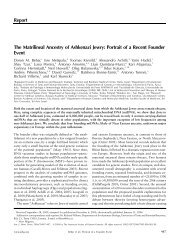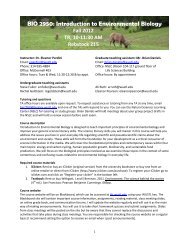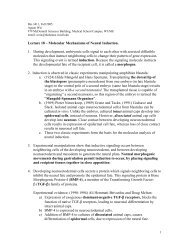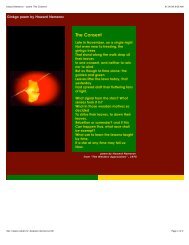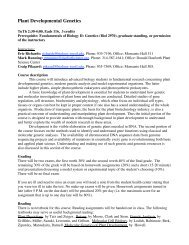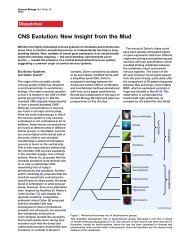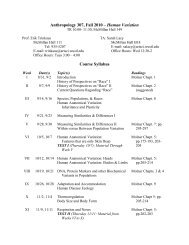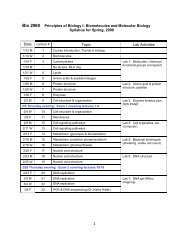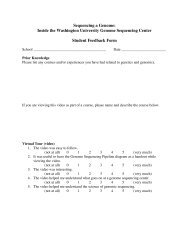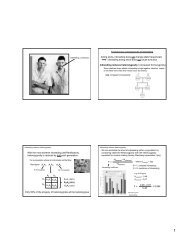BLAST Exercise: Detecting and Interpreting Genetic Homology
BLAST Exercise: Detecting and Interpreting Genetic Homology
BLAST Exercise: Detecting and Interpreting Genetic Homology
You also want an ePaper? Increase the reach of your titles
YUMPU automatically turns print PDFs into web optimized ePapers that Google loves.
default behavior under “Return Format” is “tar file.” This option means that RepeatMasker will<br />
return the results of our search as a compressed archive file. Click “Submit Sequence”.<br />
Depending on how busy the server is, the analysis may take a while (Figure 3).<br />
Figure 3. Waiting for results from our RepeatMasker analysis<br />
Figure 4. Download results from the RepeatMasker web server<br />
The results page shows a summary of the RepeatMasker analysis. Click on the link “Masked<br />
sequence <strong>and</strong> matches in compressed format” (below the header) to download the archive file<br />
containing the results of the RepeatMasker analysis onto your computer (Figure 4).<br />
Typically, you can exp<strong>and</strong> the archive file simply by double-clicking the file. You can also<br />
exp<strong>and</strong> the archive by using gunzip <strong>and</strong> then untar the file. You can also use other programs that<br />
can process tar gzip files (ie. StuffIt Exp<strong>and</strong>er, Winzip). For this tutorial, you can exp<strong>and</strong> the<br />
archive file simply by double-clicking the file.<br />
Once you have exp<strong>and</strong>ed the archive file, you should have a folder with several useful files:<br />
o A copy of the original sequence with its repeats replaced by Ns, in a file ending with the<br />
extension “.masked”<br />
o A summary of the repetitive elements found in the sequence, in a file ending with “.tbl”<br />
o A detailed list of repetitive elements found, in a file ending with “.out”<br />
Question 2: How many repetitive elements does our sequence contain, <strong>and</strong> what<br />
are their types (Hint: examine the “.tbl” file.)<br />
4



